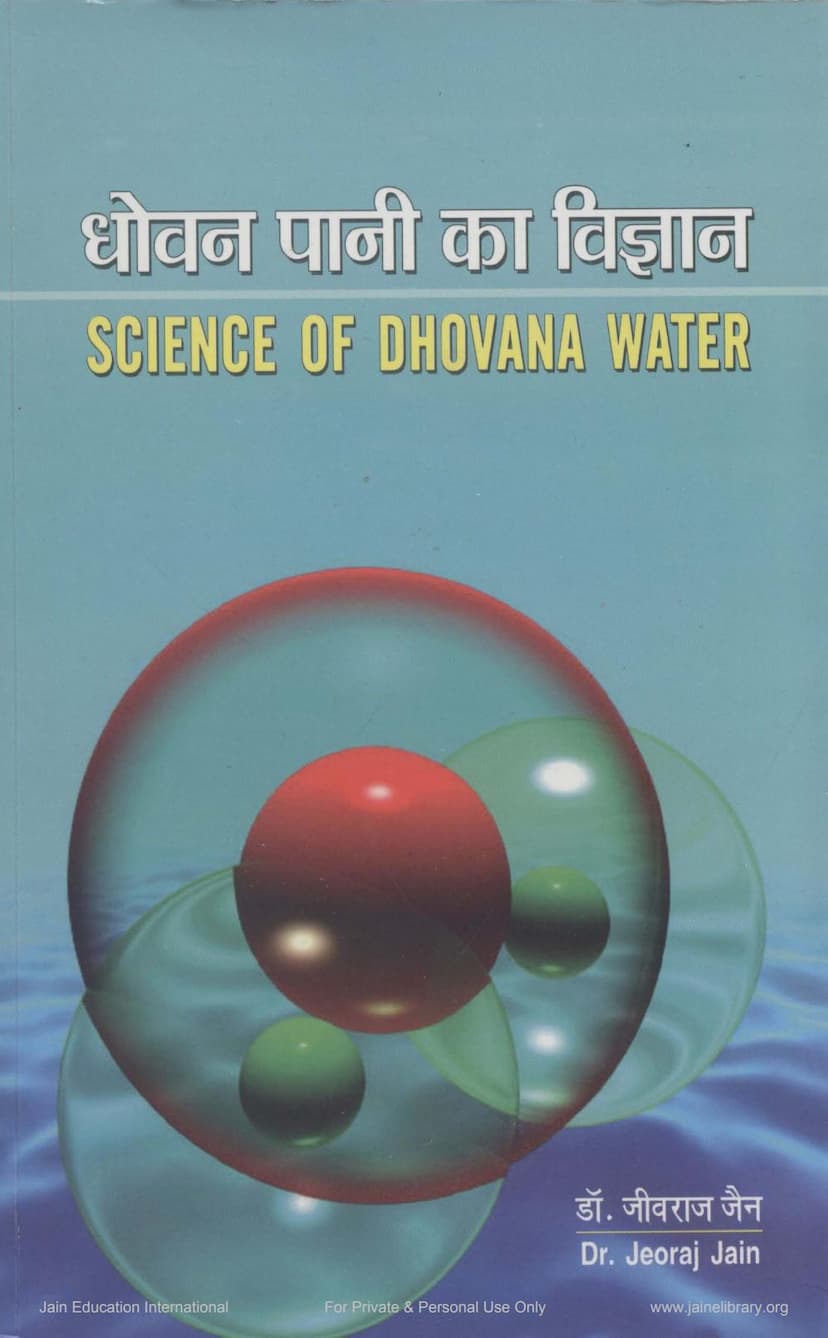Science Of Dhovana Water
Added to library: September 2, 2025

Summary
This comprehensive summary outlines the key themes and scientific explorations presented in Dr. Jeoraj Jain's book, "Science of Dhovana Water." The book delves into the concept of water as a living entity, a proposition rooted in Jain philosophy and explored through the lens of modern science.
Core Proposition: Water as a Living Entity
The central argument of the book is that water is not merely a chemical compound (H₂O) but exhibits properties of a living being. This is supported by the following:
- Molecular Structure and Symmetry: Water possesses a unique molecular structure and symmetry, influenced by factors like free oxygen radicals, temperature, and humidity.
- "Yonis" and Nano-Cellular Structure: The author proposes a "Theory of Single-Sensed Life" suggesting that water exists in "yonis" – net-like nano-tubular structures formed by water molecules. These structures, akin to cells, can absorb oxygen radicals, which are crucial for their "life" processes.
- Energy Exchange and Information Transfer: Living water cells, as defined by the author, can fix and transfer energy and information, a key characteristic of all living beings. This ability, even without traditional DNA/RNA, is explored through its interaction with homeopathic principles.
- "Living Water" vs. "Non-living Water": Water is categorized into "living" (sachitta) and "non-living" (achitta) states. Boiling, filtration through specific materials (like ash), or other processes can transform living water into a non-living state. The book details the "dhovana" process, a Jain practice of preparing non-living water, often as a byproduct of kitchen activities.
Scientific Validation and Exploration:
Dr. Jain's research aims to bridge ancient Jain wisdom with modern scientific inquiry:
- Molecular Structure and "Yonis": The book presents scientific models and diagrams illustrating the proposed nano-tubular structure of water cells ("yonis") and how they interact with oxygen radicals.
- Aura Photography: Aura photography is presented as a tool to differentiate between living and non-living water, with experiments suggesting distinct energy fields for each state. Variations in aura are linked to water's purity, treatment, and potential "memory."
- Homeopathy and Dynamization: A significant portion of the book explores the working principle of homeopathy through the lens of "living water cells." The "dynamization" process in homeopathy, involving serial dilutions and succussion, is theorized to transfer the properties and "memory" of a chemical to the water cells, even when the original molecules are no longer present. This explains homeopathy's efficacy at a subtle, potentially genetic level.
- Properties of Water: The book details various physical and chemical properties of water, including its role in biological processes, its response to temperature, pressure, and external energies, and its interaction with various substances. It also discusses subtle properties like "sparsa" (touch sense) from a Jain perspective and attempts to find modern scientific parallels.
Jain Philosophy and Practical Implications:
The book strongly emphasizes the Jain principles of Ahimsa (non-violence) and Aprigraha (non-possession) in relation to water usage:
- Conservation: The book advocates for stringent water conservation, highlighting alarming statistics on water scarcity and pollution. It presents practical tips for reducing water consumption in households, agriculture, and industries.
- Ethical Use: It stresses the ethical imperative to treat water with respect, recognizing its "living" nature. This includes avoiding wastage, pollution, and unnecessary harm to water-bodied beings.
- "Dhovana" and "Boiled Water": The book analyzes the Jain practices of consuming boiled or dhovana water, explaining their scientific rationale for making water non-living and thus minimizing violence. It addresses queries about the shelf-life of non-living water and the suitability of various methods for its preparation.
- Environmental Protection: A strong message of environmental protection is woven throughout, linking water conservation to the broader ecological balance and the well-being of future generations.
Key Areas of Investigation:
- The Nature of "Yonis": Detailed scientific explanations and hypotheses about the structure and function of these proposed water units.
- Validation of Living Water Theory: Independent experimental validation of the theories using advanced techniques like Aura photography.
- Practical Applications: Developing practical methods for preparing and using non-living water ("dhovana") and understanding its benefits.
- Reconciling Jain and Modern Science: Bridging the gap between ancient Jain tenets and contemporary scientific understanding of life and matter.
- Homeopathy's Mechanism: Providing a scientific basis for homeopathy's efficacy through the concept of water-cell memory.
Overall Contribution:
"Science of Dhovana Water" is presented as a unique synthesis of Jain philosophy and modern scientific research. It aims to revolutionize our understanding of water, emphasizing its living nature and advocating for a more respectful, conscious, and conservative approach to its use, in line with the principles of Ahimsa and environmental stewardship. The book encourages further scientific investigation into these nascent theories, opening up new avenues for understanding life and matter.